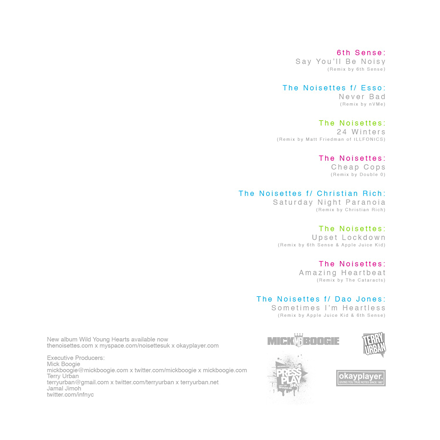Saturday, October 31, 2009
birthday bitch
Thursday, October 29, 2009
Bitch power

Tuesday, October 27, 2009
Dear HOV,

sidebar: BP3 has been getting mad plays in my iTunes...riiiidiculous.
and today...
Sunday, October 25, 2009
Still Alive

Wednesday, October 21, 2009
Catch ya favorite bitches on FB!
Become a Fan! Why the hell not?!
sidebar: don't hesitate to add us on FB :)
Monday, October 19, 2009
Sunday, October 18, 2009
Saturday, October 17, 2009
erika david
i find it hard to sing beyonces music, high notes deep sounds.. idk shes soo cute. lol
DTL.
Thursday, October 15, 2009
zomg.


I'd wear them everywhere. <3
Bebe Tyra Croco Ankle Bootie $189.
Tuesday, October 13, 2009
Monday, October 12, 2009
so yeah...
Friday, October 9, 2009
Wednesday, October 7, 2009
A fuckin' award???????!

1. Post award on your blog
2. Link or tell a bit about the person who gave you the award…
3. Each one of you who receive this award must list down 5 facts/hobbies about yourself
4. Pass this award to 5 or more bloggers
Tien's 5 facts/hobbies?
1. I'm needy
2. I ♥ Twitter
3. I'm addicted to retail
4. I feel withdrawls [sp?] when I don't blog
5. I carry a Betsey Johnson bag upon a Betsey Johnson bag...bad girl shit huh.
Donna's 5 facts/hobbies
As for giving out the awards....I ♥ every blog I follow...soooo my award is for every bitch out here in the blogging world..so everyone peep them xoxox
you know how we does...
dizaamn...

Im'a love me for sitting on cash. im proud of myself.
love always.. myself
DTL.
Monday, October 5, 2009
for those who dont know....
Call it what you want...

annnnnnnnd this is for all of you pressed about MAC when really their products can damage your skin.
Saturday, October 3, 2009
i prefer..
Friday, October 2, 2009
juicylips.

Baddest bitch in the forests


Meet Ardi...
The story of humankind is reaching back another million years as scientists learn more about "Ardi," a hominid who lived 4.4 million years ago in what is now Ethiopia. The 110-pound, 4-foot female roamed forests a million years before the famous Lucy, long studied as the earliest skeleton of a human ancestor.I ♥ the study of Evolution.This older skeleton reverses the common wisdom of human evolution, said anthropologist C. Owen Lovejoy of Kent State University.
Rather than humans evolving from an ancient chimp-like creature, the new find provides evidence that chimps and humans evolved from some long-ago common ancestor — but each evolved and changed separately along the way.
"This is not that common ancestor, but it's the closest we have ever been able to come," said Tim White, director of the Human Evolution Research Center at the University of California, Berkeley.
The lines that evolved into modern humans and living apes probably shared an ancestor 6 million to 7 million years ago, White said in a telephone interview.
But Ardi has many traits that do not appear in modern-day African apes, leading to the conclusion that the apes evolved extensively since we shared that last common ancestor.
A study of Ardi, under way since the first bones were discovered in 1994, indicates the species lived in the woodlands and could climb on all fours along tree branches, but the development of their arms and legs indicates they didn't spend much time in the trees. And they could walk upright, on two legs, when on the ground.
Formally dubbed Ardipithecus ramidus — which means root of the ground ape — the find is detailed in 11 research papers published Thursday by the journal Science.
"This is one of the most important discoveries for the study of human evolution," said David Pilbeam, curator of paleoanthropology at Harvard's Peabody Museum of Archaeology and Ethnology.
"It is relatively complete in that it preserves head, hands, feet and some critical parts in between. It represents a genus plausibly ancestral to Australopithecus — itself ancestral to our genus Homo," said Pilbeam, who was not part of the research teams.
Scientists assembled the skeleton from 125 pieces.
Lucy, also found in Africa, thrived a million years after Ardi and was of the more human-like genus Australopithecus.
"In Ardipithecus we have an unspecialized form that hasn't evolved very far in the direction of Australopithecus. So when you go from head to toe, you're seeing a mosaic creature that is neither chimpanzee, nor is it human. It is Ardipithecus," said White.
White noted that Charles Darwin, whose research in the 19th century paved the way for the science of evolution, was cautious about the last common ancestor between humans and apes.
"Darwin said we have to be really careful. The only way we're really going to know what this last common ancestor looked like is to go and find it. Well, at 4.4 million years ago we found something pretty close to it," White said. "And, just like Darwin appreciated, evolution of the ape lineages and the human lineage has been going on independently since the time those lines split, since that last common ancestor we shared."
Some details about Ardi in the collection of papers:
• Ardi was found in Ethiopia's Afar Rift, where many fossils of ancient plants and animals have been discovered. Findings near the skeleton indicate that at the time it was a wooded environment. Fossils of 29 species of birds and 20 species of small mammals were found at the site.
• Geologist Giday WoldeGabriel of Los Alamos National Laboratory was able to use volcanic layers above and below the fossil to date it to 4.4 million years ago.
• Ardi's upper canine teeth are more like the stubby ones of modern humans than the long, sharp, pointed ones of male chimpanzees and most other primates. An analysis of the tooth enamel suggests a diverse diet, including fruit and other woodland-based foods such as nuts and leaves.
• Paleoanthropologist Gen Suwa of the University of Tokyo reported that Ardi's face had a projecting muzzle, giving her an ape-like appearance. But it didn't thrust forward quite as much as the lower faces of modern African apes do. Some features of her skull, such as the ridge above the eye socket, are quite different from those of chimpanzees. The details of the bottom of the skull, where nerves and blood vessels enter the brain, indicate that Ardi's brain was positioned in a way similar to modern humans, possibly suggesting that the hominid brain may have been already poised to expand areas involving aspects of visual and spatial perception.
• Ardi's hand and wrist were a mix of primitive traits and a few new ones, but they don't include the hallmark traits of the modern tree-hanging, knuckle-walking chimps and gorillas. She had relatively short palms and fingers which were flexible, allowing her to support her body weight on her palms while moving along tree branches, but she had to be a careful climber because she lacked the anatomical features that allow modern-day African apes to swing, hang and easily move through the trees.
• The pelvis and hip show the gluteal muscles were positioned so she could walk upright.
• Her feet were rigid enough for walking but still had a grasping big toe for use in climbing.
The research was funded by the National Science Foundation, the Institute of Geophysics and Planetary Physics of the University of California, Los Alamos National Laboratory, the Japan Society for the Promotion of Science and others.












































